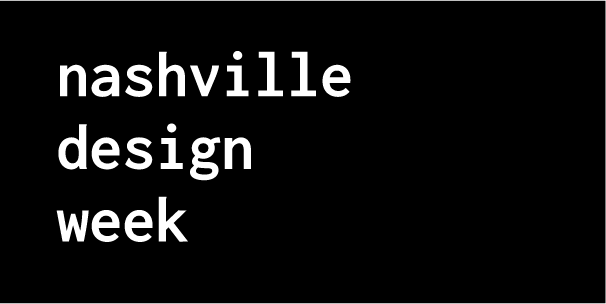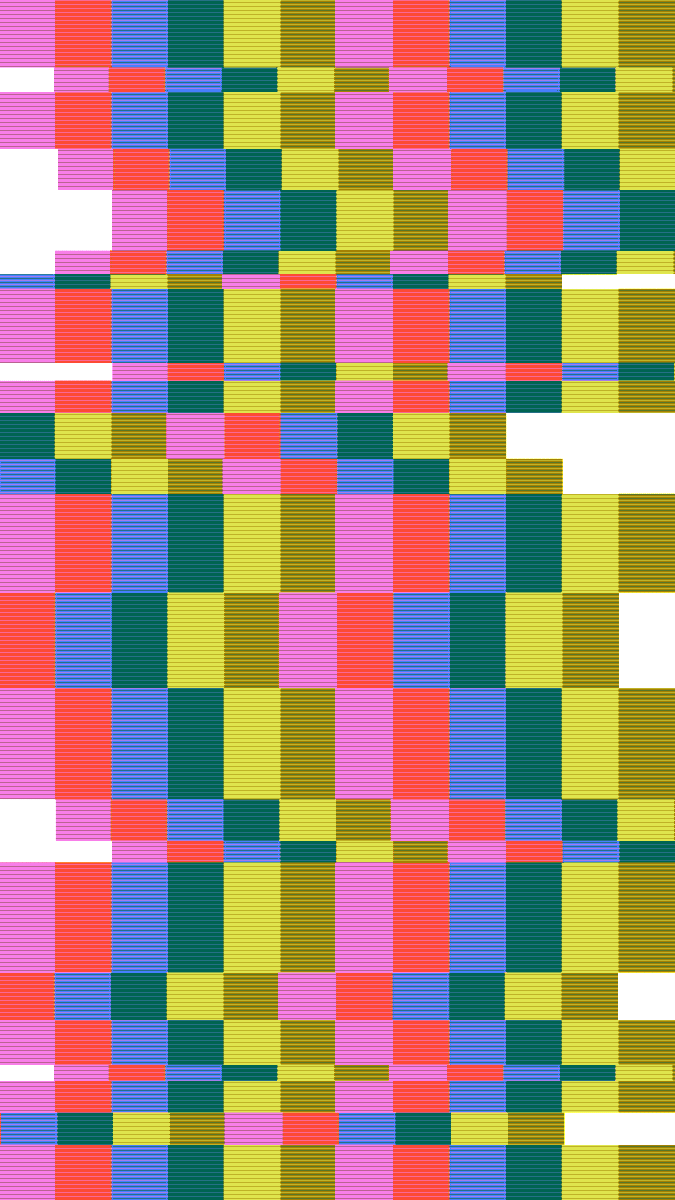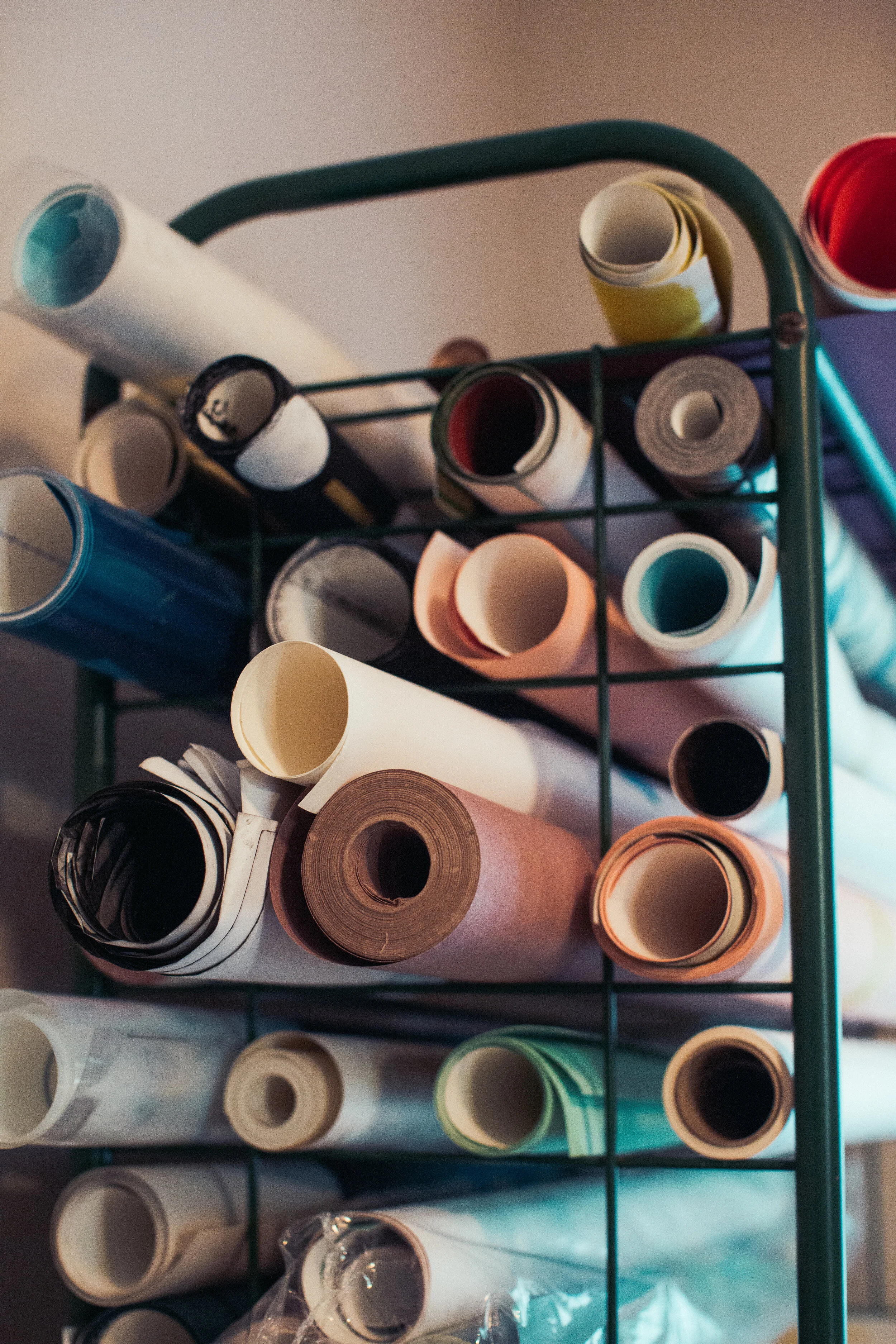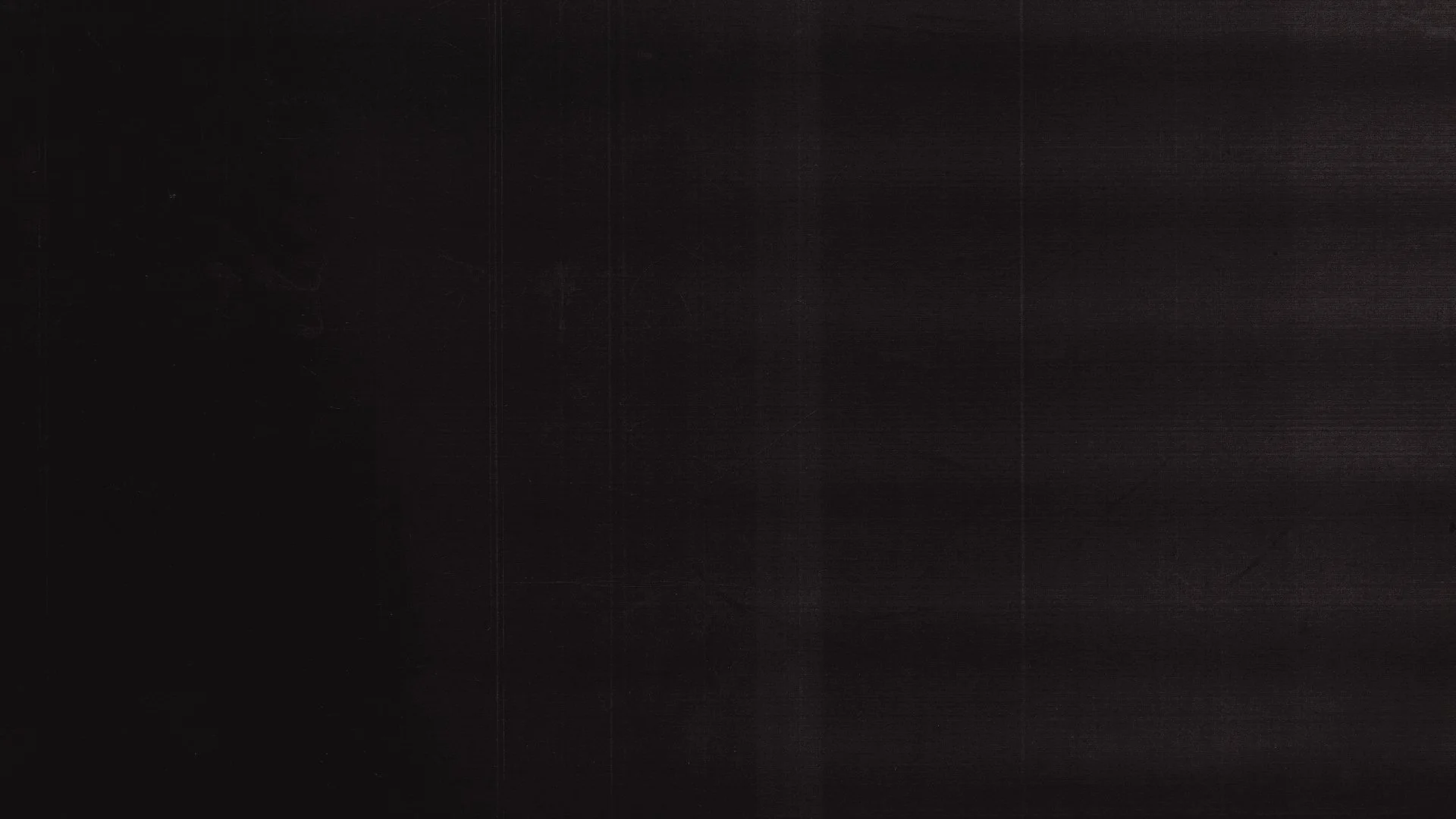
Studio Visit: New Hat
Story By: Cat Acree
Photography: Daniel Meigs
Nashville Design Week 2018
Kelly Diehl and Elizabeth Williams of New Hat Projects are slowly transforming Nashville’s interiors with some of the freshest, boldest surface coverings this town has ever seen.
From their first collaboration in 2014 with Dozen Bakery to the graphics and event design for last year’s Nashville Fashion Alliance Honors awards ceremony, their work signals a new generation of fearless creativity in Nashville. Portal Project, their hallway installation at Clay Ezell and Vadis Turner’s home that is a combination of hand-printed and screen-printed wallpaper and brass, is so cool it makes me want to cry a little.They’re also queens of collaboration: Diehl, a Nashville native, brings a fine art focus, while Williams, who has lived in Nashville for nearly 15 years, brings graphic design. In their East Nashville studio, the two women speak lightly and hilariously about their work. The launch of their first product line looms over them (a notepad on their desk has a to-do list; number one on the list is “LAUNCH”), but when it comes to New Hat, playfulness and joyfulness are unavoidable.
How did you find your way to your design process?
Elizabeth–
Just out of necessity. We wanted to start this business and be artists and work for ourselves, and that necessitated us working on commercial projects and connecting with people who needed us to solve visual problems for them.
Kelly–
The way we started was a way to make our artwork and large-scale work with no overhead. It’s spread kind of by word of mouth. We’ve gotten to the point where we want to introduce products as another stable revenue stream so that we can devote time to bigger, more impactful projects.
How do you define design?
Elizabeth–
What was the really dumb thing I read yesterday? ‘Design is a way of life and how it makes you feel. In a space. In a room.’ We’re in the middle of having to write statements about things, so we’re having to speak truthfully and say things that we’re passionate about but not in platitudes. It’s hard to answer those questions without seeming disingenuous.
Kelly–
Or vague.
Elizabeth–
I remember having a conversation with Kelly, because when you’re in your mid- to late-twenties, you’re asking yourself big questions. One night I was like, ‘What is art? What do I think good art is?’ It was a question that scared me because I had never asked that question in art school. … [Kelly] said the most profound thing to me at the time: ‘Is it true, and is it beautiful?’ That was so simple and perfect for me to hear, because I wanted it to be this analytical, heady thing. … I think I’ve been chasing after that feeling since then. That’s why we make design work, and try to make things better and clearer and more beautiful and surprising and delightful—all the things that you want to better your surroundings or better the world that we live in in a way that makes sense to us.
Kelly–
Design is always solving a problem, and doing so to the best of your ability and experience and history. I guess I separate design from art, with the problem-solving aspect. … Product design, any kind of design, graphic design, architecture—those are all born of some kind of prompt based on the material world and needs, whereas art comes from a more immaterial, spiritual place.
What three things influence your design the most?
Elizabeth–
I’d say architecture, art history.
Kelly–
And decorative arts history.
Elizabeth–
Wallpaper and pattern designs specifically.
What is your process for working together?
Elizabeth–
It’s definitely a conversation, and then we tend to get each other excited about something, and if we feel that energy spark between each other, we go after it. You can tell when the energy’s not there. It doesn’t mean it’s a bad idea. Something happens that I can’t necessarily describe—an energy exchange that’s an unsaid pact that we make. Yes, we will carry on with this idea and see it to fruition.
Kelly–
Or even if we don’t know at the moment, it’s something that we can come back to.
Elizabeth–
Then Kelly may draw it out, and she’ll give it to me, and then the computer magic happens, and she helps me refine it. And then we go into the land of color, which is so deep and wonderful, and explore how the design changes because of that, and then we talk about scale. … It’s layer upon layer of complexity added to the process, and we’re both part of those decisions.
Kelly–
We trust each other’s instincts and ways of talking about things. It’s become this effortless build.
Elizabeth–
Which is totally unfair for the rest of the world because everyone else has to work with people that they hate collaborating with and they have to listen to podcasts that tell them how to work with other people’s personalities.
Kelly–
[Laughs] And then they try to do it alone, and it’s too much work, and they hate their failures.
Elizabeth–
We just think that we’re failing together, and then we can cry and talk ourselves out of it. Collaboration is very difficult, but we’re lucky that we work so well together.
Kelly–
We have a shared catalogue of visual references that has really gotten us going—geometric, architectural, minimal, playful.
And what’s it like to add in a client or third party?
Elizabeth–We’ve been able to do some weird commercial projects [because] people put us in this weird, kooky category. We didn’t have to do something that we weren’t necessarily proud of in the beginning, which is really lucky. Sometimes you just have to do jobs to make money, and then you get known for doing the thing that you don’t really want to do. ... We’re working with 8th and Roast right now, and they want a large-scale mural in their new location. They gave us a prompt to use some of the ethnic vocabulary and regions where they get their beans from, so we did this weird collage, more avant-garde thing, and everyone’s like, ‘I don’t know what the hell that is but I like it and I’m into it.’ We’re able to do something that’s weird and that they didn’t expect, but it’s not so weird that they can’t get behind it.
Kelly–
It’s not confrontational. We work with color and pattern, and those are things that are very familiar to all of us in terms of all these learned histories of textiles and craft.
Elizabeth–What we strive for a lot of the time is something that has a sense of familiarity that also seems foreign, and that duality is very important to us.
Kelly–
And right now, feminine crafts and work are more accepted and creeping into all these art and design forms. We’re seeing fibers, embroidery—it seems new, because it’s been this colder, more masculine environment up to now, but it’s like a rainbow explosion of more voices in design. Plus with Instagram, everyone wants STATEMENT SPACES.
Elizabeth–
[sings] Where’s my selfie wall??
How do you characterize your role within Nashville?
Elizabeth–
For us being younger women who are trying to have a voice in the conversation in Nashville, the fact that we’ve been able to do our business and people are supporting that is a testament that there is some value to design in Nashville that’s bubbling up, even if we are one of the only options [for what we do].
Kelly–
We’re trying to look outward more, within the community, to what’s been successful and trendy. We’re bringing that perspective. But just being the first can be a step forward for our microindustry in Nashville.
Elizabeth–
We really care about things like [Nashville Design Week], because we see that it will bring more attention [from] outward to inward.
Kelly–
There’s an intellectual capability to assess and live in and seek out high design, better design. It’s just a lack of options or precedence.
Elizabeth–
And manufacturing stuff, too. That’s not as available in Nashville, too. … There are a lot of people who can provide that stuff [in Nashville], but it’s not built in. Similar to the fashion industry, and that’s what Nashville Fashion Alliance is trying to do, with bringing more sewing and fabric and all the stuff you need to put together a collection.
If you could collaborate with another organization in Nashville, who would that be?
Elizabeth–
We would love to do something with Andra Eggleston, who does fabric and textiles, and that would just be easy. Do a wallpaper with her. In a more real way, I think the opportunity to work with Sideshow for Nashville Design Week is really exciting for us, because we do have a lot of sculptural ideas. Kelly is a sculpture major, but we don’t do a lot of fabrication ourselves. We do what we can, but we don’t have all this overhead with machines and space that can accommodate all of that, so [we’d like to continue] working with more production and fabrication people. And maybe to have a heavier hand in the future with any sort of development project, being more of a creative director role with an architecture firm that we love and adore.
—
